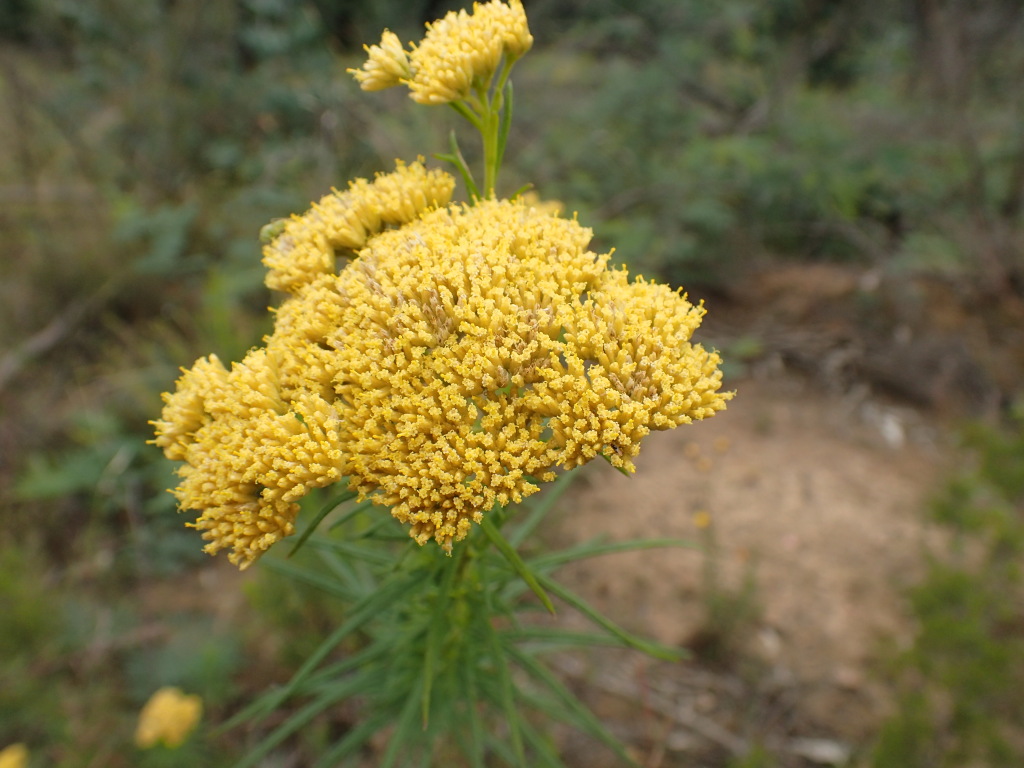Cassinia venusta
OrchardErect shrub 1–2 m high; branchlets with dense gland-tipped acicular hairs, slightly viscid. Leaves spreading, sessile, terete, (40–)50–70(–95) mm long, 1.0–3.0 mm wide, glossy to subglossy deep green and glabrous or with minute conical papillose hairs above, short acicular hairs except on midrib beneath, apex acute with a mucro, margins strongly revolute. Inflorescences corymbose, (2.5–)6.5–8.5 cm diam. Capitula hundreds to thousands, pale yellow-brown to green, cylindric, 4–4.5 mm long, 1–2 mm wide; involucral bracts 10–14, innermost liner-lanceolate to linear-oblanceolate with lamina narrow-triangular, c. 1.5–2 mm long, erect, flat, hyaline, margin entire to erose; receptacle bracts c. 3; florets 4 or 5. Cypsela cylindric, (0.9–)1.0–1.1 mm long, glabrous. Pappus absent. Flowers Nov.–Feb.
NIS, EGU, HNF. Also NSW. In Victoria known from Pine Mountain and Mt Mittamatite in the north-east, but based on an old Mueller collection, Cassinia venusta may also occur in granitic areas on the Snowy River. Locally common understorey shrub in Eucalyptus forest on grey sandy, clay or loamy soils over granite. Occurs from 240–940 m altitude.
Cassinia venusta and the similar Victorian species C. scabrida were once included within a broader C. ozothamnoides (see note under C. ozothamnoides).
Cassinia venusta and C. scabrida co-occur near the summit of Pine Mountain but the species seem to maintain their distinctiveness (Orchard 2004a).
 Spinning
Spinning
